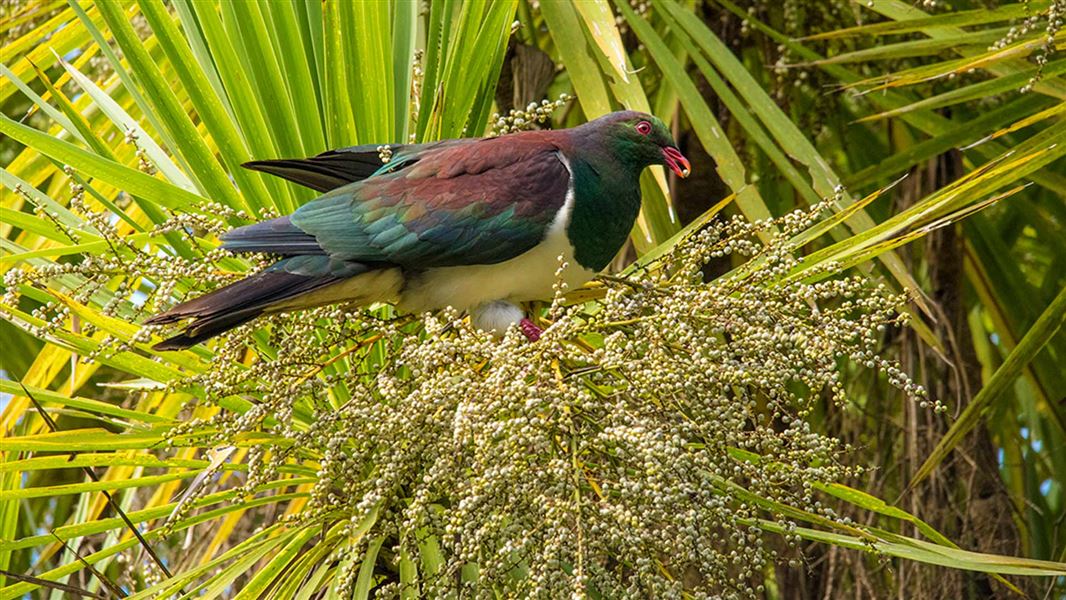Image gallery
Look out for the UrbanNature Kererū Landscape panel on Hawthorn Ave in Mornington, and in Prospect Park.
Just like many of us, kererū and tūī are gardeners and landscape designers. But their method of tree-planting is a little different to ours. When kererū and tūī eat a tasty snack of native berries, they also ingest the plant's seeds. Later, they will poop out the seeds complete with added fertiliser. As the birds fly far and wide, they're dispersing seed-laden poo, guiding the design of forest landscapes and boosting native bush regeneration.
Tūī and bellbirds/korimako are important pollinators and seed dispersers, but kererū are the ultimate seed-spreading champions. Since the extinction of the moa, kererū are the only surviving birds capable of swallowing large fruits such as miro. For this reason, kererū are a keystone species in our forest ecosystems, where over 70% of woody plants have fruit that is eaten by birds. The disappearance of these fruit-munching fatties would spell disaster for our native bush.
Although in Dunedin we are lucky to have kererū hanging out in our suburbs, their numbers are in gradual decline. Habitat loss, illegal hunting, predation by rats, stoats and cats, and competition with possums for food are all contributing factors.
You can help
You can help by planting a variety of natives in your garden to provide food for kererū. For kererū-friendly plant suggestions specific to Otago, check out Project Kererū. Project Kererū is a Dunedin-based conservation organisation that cares for sick and injured kererū. DOC has a general guide for what to plant to attract native birds to your backyard.
The annual Great Kererū Count is another fantastic way to get involved. For one week in September, keep track of every time you spot those birds wearing a white singlet stretched over a big puku, or hear the characteristic whoosh of kererū wings.
For a list of the top ten things you can do to help kererū, visit Kererū Discovery.
Did you know?
A kererū swallowing a large native fruit like karaka would be equivalent to a human swallowing an orange whole!
